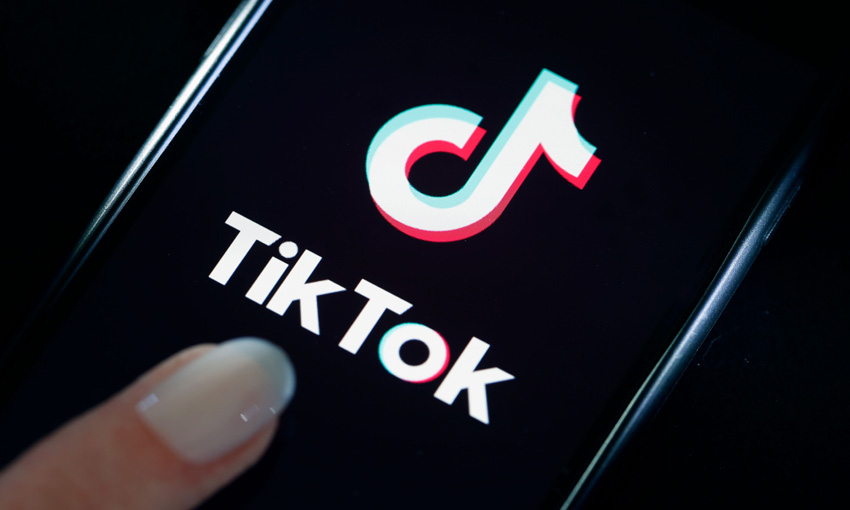Disclosure: Privacy Australia is community-supported. We may earn a commission when you buy a VPN through one of our links. Learn more.
How to Buy & Trade Silver

In today’s digital world, it can feel like owning physical silver is an outdated concept. Should this precious metal rank highly in your portfolio? Look closer and you’ll see there are still several reasons to consider buying silver.
In this guide, I cover some of the essentials of investing in silver, including buying physical silver.
Table of Contents:
- 💿 What is Silver (And Why Would You Buy it)
- 💿 Why Modern Investors and People Invest in Silver
- 💿 How Can I Buy Silver in Australia? (Jewellers, ETFs or Futures)
- 💿 Greatest Benefit of Possessing Physical Bullion Compared to Market Derivatives
- 💿 Silver Investment Rookie Errors
- 💿 Precious Metals Uses
- 💿 FAQs
What is Silver (And Why Would You Buy it)? 💽
Remember, this guide isn’t financial advice. I’m simply exploring topics conversationally. In the end, you must make the decision. I’m not a financial expert. At a glance:
- 🥈 Silver is a brilliant white metal that looks striking against many different coloured backgrounds. It is a soft and malleable metal at room temperature but becomes darker when heated to its melting point. For this reason, silver is often part of the alloy used in the making of coins, bars and ingots.
- 🔌 Industrially, one of the reasons silver is popular is that it is a very efficient conductor of heat and electricity. This makes it useful for a range of electronics, such as computers and other devices that rely on electrons travelling from one place to another.
- 💵 Investors trade silver for two main reasons: 1) They want to make money in the short-term or 2) As long-term value stores of cash. Silver holds its value because it’s used in a variety of everyday items, such as water filters and dental fillings or ornamentally, due to it being a very resistant metal that is also malleable and ductile, which makes it ideal for many different purposes. Read how to invest in gold.
Gold as an investment dates back millennia

The ancient world had a fascination with precious metals. They were valued for their beauty, used to make jewellery and ornaments, and also as a currency. In fact, Latin, Greeks and Romans have used silver for a long time.
People even believed that by wearing gold bracelets they could ward off disease. The demand for these precious metals led to their widespread use in different areas of the world. Here are some interesting facts about the history of silver:
History of Silver 🏛️: Where and how it is mined
Silver deposits are found in many parts of the world, including Europe, North and South America, China, Africa, Australia and Asia. It is mined from silver ore and then purified to produce silver ingots and silver bullion.
While silver is found around the globe, it is often associated with Peru and Argentina. Peru is famous for the silver mine Siete Hermanas which is more than 5,000 years old.
Silver used in jewellery
Silver was and still is used to make jewellery. It is because silver is visually impressive and looks quite beautiful. It is not only used in jewellery, but also in silver utensils, plates, bowls, tableware, ornaments, ornaments and musical instruments.
Silver has a long history of use in photography
Silver is used as an antioxidant in photography film, as it prevents the film from developing stains and fading. It is also used in creating silver prints, which are a form of photographic paper that is created by placing a silver gelatin negative onto a sheet of paper.
It’s both expensive and rare, but it does not easily corrode, making it a premium option for producing art photographs. Silver is also used in medical applications, such as in the production of silver-based medical imaging materials like x-rays and MRIs.
Silver has many industrial uses
Silver has many industrial uses including electronics, photovoltaics, chemical and healthcare. It has been used in the production of mirrors, water purification, and air conditioners. It’s also used in electrical technology, sensors, batteries, superconductive materials, bioelectricity, and thermoelectric energy.
Its many industrial uses include the control of mechanical motion in machines and equipment. Silver is even used in the production of solar panels and solar energy, although it’s not as commonly used in solar panels as some other metals, such as copper.
Overall, silver is found everywhere. The history of silver is multifaceted and it’s worth checking out in order to beter understand the true value of silver.
Why Modern Investors and People Invest in Silver
It’s popular
Silver is a very popular investment option because it is such a versatile metal. It is useful in a wide range of different industries and is one of the few metals that is resistant to corrosion. This makes it a very useful investment option.
It’s liquid
And crucially, it’s globally liquid. As with gold, silver coins and bars can relatively quickly be sold back into the market if you know what you’re doing. Silver is universally and cross-culturally accepted as a form of currency, making it a decent hedge against inflation from market volatility that fiat cash and stocks are more exposed to.
It’s relatively simple
Being such a versatile investment option, this makes silver a particularly interesting (and historically long-standing) choice for those who wish to invest their money, but do not have the time or the expertise to trade in an asset that could be more risky and complex.
There are many different places that offer silver as an investment—from physical silver to futures contracts available on global commodities exchanges—let’s get onto that.
Overall
Silver is one of the more liquid precious metal, up there with gold. Silver bars and coins can be relatively easily returned to the market whenever you quickly need cash. Silver is widely accepted by international businesses and consumers. And it’s been used across history as a store of wealth.
Many cultures value silver. Many investors use it as a hedge against inflation. And it historically has recorded a stable value that at least can hold up better than stocks and bonds.
How Can I Buy Silver in Australia? (Jewellers, ETFs or Futures)
Let’s explore some of the ways to purchase silver in Australia.
To begin with, you can purchase silver bars or coins from a jeweller or dealer. You can also purchase silver bullion, which is typically issued in kilogram blocks or as tokens (coins). Bars and coins are structured to be suitable for investors and collectors, with silver bullion especially designed for investors looking to have a wealth store physically that can hold against fluctuations in the price of other goods.
Note that there are several different forms of silver bullion available on the market with different sizes and prices. Civil bullion items are normally sold per ounce or kilogram. The cost per ounce varies according to the purity of the silver. The more pure the silver, the higher costs. But before you buy, you should do your research in order to make an informed choice about what the perfect amount and purity for you.
Once you determine how much you want to purchase, you can get this from a jeweller or dealer one of three central ways — note that the first examples work according to the spot price of gold (the current market price), whereas futures speculate on future prices:
- 👑 Cash payment
- 📊 ETFs or silver bullions
- 📈 Silver futures
Spot Prices compared to Futures
As I briefly mentioned, there are different ways silver can be priced. Indeed, silver fluctuates in value just as with any other commodity, like oil and gas. The supply and demand forces are responsible for this, although it is very speculative. The main ways these are handled are futures and spot prices.
The spot price is simply the current market price that the assets going for. By comparison, futures prices set a future cost for the asset, using a contract. This lets investors buy and sell silver at specific prices on specific dates. Futures contracts are structured the same way — there is a standard volume and length; trading takes place on specific exchanges. There is even a bitcoin futures market.
The price of silver as a spot price fluctuates many times during a single day. Whenever you place an order, assuming you are asking for the physical delivery of silver, you are purchasing it at the current market price that the broker is seeing – with fees deducted. By comparison, the price of futures silver contracts only fluctuates at specific points of the day on the exchanges. These fluctuations happen when investors trade contracts with each other.
Overall, the silver market is extremely liquid — you do not need to wait for the expiration of your futures contract to convert your physical silver into cash, because most silver can immediately be returned to the market. Another difference between this and the stock market is that one piece of silver is generally the same as another, assuming the purity is the same.
What is an ETF?

Exchange-Traded Funds are a type of investment that let you handle fractions of units in a single fund. ETFs operate on stock exchanges, no different from shares. A single unit represents a proportion of silver being held by the custodian, for instance, a bank.
By investing in an ETF, you can frequently fine-tune exactly how much silver you want to own, typically in ounces, and the level of risk you are willing to accept. Many different forms of exchange-traded funds exist on the market with different levels of return and risk.
Once you’ve placed your investment, there is some passive management but it is generally up to you to track whether it is progressing at an acceptable rate. To do this, simply log into your broker, and see your portfolio listing for silver being held by the custodian bank.
How purchasing silver bullion works…
Let’s suppose you want to purchase physical silver bullion from a jeweller or dealer. There’s quite a bit to know — to begin with, you need to differentiate between store silver and trading silver. Trading silver means the smaller coins and bars that are tailor-made for traders who want to gain a return by selling that silver back into the market for a profit. They are looking for the most tradable form of silver, for that reason.
By comparison, store silver will typically be larger coins or bars made for investors who want to hold their silver investment for longer periods of time. You can get trading silver from most jewellers, although you need to visit a specialised dealer when purchasing store silver.
When buying trading silver, it’s crucial to understand what the spot price is and how much your investment is currently worth — so you can track whether it is growing at a decent rate. You’ll find this information online or by questioning your local dealer. If you want to liquidate your trading silver, you need to return it to the same dealer you bought it from — they can most efficiently verify that it is the same weight and is authentic. For this reason, it’s obviously very important that your dealer is trustworthy.
Greatest Benefit of Possessing Physical Bullion Compared to Market Derivatives
It might seem archaic to actually own silver bars and coins. But you, perhaps, shouldn’t be so quick to dismiss the idea of physical silver bullion.
One of the great advantages to owning physical silver is that you massively eliminate the counterparty risk: which is the risk that the other party in an investment, credit, or trading transaction may not fulfill its part of the deal. In some cases — for instance, with trading silver — your dealer may be your continued counterparty risk, in the event that you need a specific branch to convert your silver bars to cash.
By comparison, using an ETF or an exchange-traded note, you are depending on a third party to guarantee your holdings and their value. However, shareholders do not actually possess rights to the silver metal — except in cases where they are approved ETF participants. This is why owning the actual silver makes it more like your own possession. If the world turns upside down, you have a physical, hard store of value safe in your hands or your bank vault. This underlines one of the central reasons that traders opt for physical silver — as insurance.
One spectacular example of counterparty risks can be seen in the MF Global bankruptcy that happened towards the end of 2011. Investors who had made purchases in silver bars — with the receipts confirming it being stored in their warehouse — were alarmed to find that the assets were frozen. The trustee went bankrupt with court approval and investors only received less than 75% back of their assets value, including the silver bars.
There are also controversies around manipulations in markets by some of these xxchange-traded notes and ETF affiliates – so you are taking on more complexities. Ultimately, the fees for ETFs also undermine the final payment you will receive.
Silver Investment Rookie Errors
Buying While High
I don’t mean the other kind of high… An investor could be lured into investing in silver because it is reaching an all-time high. They want to get in so that this can continue. But buying when silver is at its peak is not necessarily the optimal time.
The value of silver is the product of many supply and demand forces, one of them being interest rates and the health of an economy. When silver prices increase, this is typically a signal to investors that people are wary about the health of the economy. Or, it could be worrying about Australia’s national security and people are looking for a safe place to store capital.
This means that the market is biased towards pushing up the price of precious metals. But this will necessarily continue in the future. If supply and demand forces shift, your investment could also drop. Knowing if you are timing the market right is a hard game.
Selling Using Emotions

So you’re feeling lucky…?
A rookie mistake with trading silver is buying or selling when you’re feeling lucky. Admittedly, you could have the magic touch – your sense of the time to take risks could be spot on, and is the perfect time to buy or sell. But what if you bought silver at $1,300 per ounce and it is now trading at $1,500 per ounce?
In that case, it is very tempting to immediately sell to take the profits. Selling at this stage could be a mistake. The price of silver fluctuates constantly based on supply and demand. Unless you are a professional, you may want to take a breather and look at the bigger, long-term picture. Silver can be a great hedge, a store of capital, rather than making a few hundred bucks here or there.
Of course, the price of silver could climb even higher: what if times are unusually chaotic? Your silver may even be able to give you unexpected returns five years from now, particularly if you slowly trickle more funds into your balance. Selling when things are high gives you a short-term gain, but perhaps a much bigger long-term loss of potential profit. And selling at a loss, when the price was low, is acting on the fear impulse — the price could swing back up. Ultimately, if it hovers around the same mark, you have still gained a capital hold.
Buying Silver Safely (and Storing Silver)
As mentioned earlier, it is simple enough to purchase silver bars, bullion, or coins to physically store as an investment in your vault or under the mattress. Hopefully not under your mattress…
Silver coins come in many different shapes, sizes and even grades – which can make it difficult to predict their exact value. By comparison, silver bars are typically rectangular standardised.
However, you will need to consider how to securely store your silver. Once again, I don’t recommend under the mattress. You don’t want to lose or have it stolen — something like a rugged bank vault or fireproof safe may be a good idea.
While this should be common sense, let me remind you that you should not talk about your silver or get into the habit of lending it out know about it, the better. Ensure that nobody has the key to the location of your storage. Combination locks are useful, as well as lock boxes and security alarms to make it more difficult for people to access your silver storage.
Precious Metals Uses
Precious metals can be an excellent investment for anyone who wants to diversify their savings and is willing to spend some time researching the market. There are many different types of precious metals, and each has its own unique properties and uses. A quick overview:
- ✔️ Copper wires are used to conduct electric current — While it’s not exactly a rare metal, it’s very important to the manufacturing process of electricity. As you can imagine, a reliable supply of copper is essential to the production and supply of electricity.
- ✔️ Silver is often used in the production of electronics too — for example, it’s used in the production of solar cells. But it’s also extraordinarily beautiful when used ornamentally, so is found in a range of decorative contexts.
- ✔️ Gold is often thought of as a smart investment because it’s so valuable — but it can also be used for everyday items such as electronics and dental equipment. Gold also has many industrial uses such as in the production of light bulbs, batteries, and electronics.
Investing in Industrial Copper
Copper (45-year historical chart) is used in numerous products and processes, including structural components, wiring, and a variety of other products.
It’s also used in electrical power transmission and distribution systems, in automobiles, and in the manufacturing of household appliances such as stoves and air conditioners.
Copper is an extremely affordable precious metal, and it’s easy to find. You can even buy it in bulk and store it in a safe. Copper is a great investment because it’s not only a necessary component in many products but also in the electrical power transmission and distribution systems, which are sure to be around for a while.
Gold
This soft, shiny, malleable metal is often used to make jewellery. However, gold is also used in a variety of other products such as electronics, dental equipment, construction, aerospace, and automotive.
Gold has been used as a currency for thousands of years, and it’s still used today in some places as an investment or commodity. It’s a very rare metal, making it a valuable commodity. Gold is often thought of as an smart investment because it’s so valuable, but it can also be used for a wide range of everyday items.
Silver 💽
Silver is perhaps the best of both worlds between gold and copper…
It’s a soft, silvery-white metal that’s often used for making coins, silverware, and other silver products. Silver is often used in place of gold when it comes to making coins because it costs less and is easier to produce. Silver is often used in electronics, including the production of solar cells.
But it’s used in many other areas such as healthcare, where it’s used in the production of insulin, X-ray machines, and other medical devices. Silver also has many industrial applications such as in the production of light bulbs, batteries, and much more.
Platinum
As a bonus entry, platinum is an extremely rare, expensive metal that’s often used in the manufacturing of medical devices. Platinum is also used in the production of jewellery and has many aesthetic uses such as in the production of art. Platinum is a very expensive precious metal, making it an interesting investment option for those with a little extra money to play with.
FAQs: How to Buy & Trade Silver 📀
What Factors Can Drive Up the Price of Silver?
Many factors can drive up the price of silver. It tends to be linked to the price of other commodities like oil and gold. Depending on how far the price of these other commodities goes up, they could drive up the price of silver even more..
The price of silver can also be impacted by worldwide economic factors. The role of governments in the management of the economy, as well as technological innovations, could have an impact on the price of silver. Long-term, silver seems to hold value well, so it is comparable to gold.
What is Silver Bullion?
Bullion can be defined as any piece of highly concentrated silver that has been mined and refined to 99.9% purity (or more). The term silver bullion can also refer to any type of silver coin or bar that contains 99% pure silver (or more).
What Are Some of the Risks Associated with Investing in Silver?
Perhaps the largest risk involved in investing in silver is that the value of silver isn’t stable short-term — it’s volatile. However, this is true of almost anything. But it’s fair to say that certain assets have more stability than others. In the long run, silver seems to respond well in recessions — the way it responds to supply and demand seems counter-current to depreciate forces when markets take a decided downturn. People tend to invest in things that are useful for productivity and manufacturing – silver, to some degree, is one of them.
How Can Silver Traders and Investors Reduce Risk?
One way of hedging against the risk of silver volatility is to take a diversified approach to your portfolio that is centred around a clear, single purpose. For instance, you may put your cash savings into land, family, and provisions.
Conclusion 🌞
We hope you enjoyed this guide on how to buy & trade silver. Although you can’t grow and harvest it on farmland, silver is derived from the Earth and has many hearty uses in everyday life — manufacturing being one of them.
Silver has also been used as currency, ornaments, and jewellery, making it an expensive and rare metal. It’s used in photography as an antioxidant and in industrial applications. These are just some of the many ways silver is used. And it’s has been around for thousands of years, and it will likely continue to be used for many years to come.
When you invest in silver, you potentially protect yourself against short-term financial instabilities. It gives you a place to put some of your extra capital. Although, it’s not necessarily the best place to put the first part of your extra savings.
You Might Also Like:






